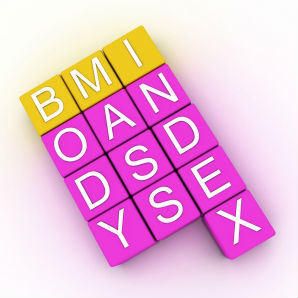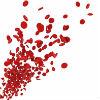| RESEARCH |
|
| Young Australian adults’ reactions to viewing personalized UV photoaged photographs |
| |

|
Although young Australian adults are aware of the cancer risks associated with UVR exposure, the attractiveness benefit of having a suntan acts as a social barrier to behavioural change. Personalised UV photoaged photographs can be effective by instantly revealing short-term skin damage. This qualitative study highlights the necessity for future public health skin-protective campaigns to incorporate positive non-tanning appearance-related messages. Photo by Freedigitalphotos
|
By
Myra F Taylor, Lisa Lo Presti, Paul Chang
|
| |
|
| Proton Pump Inhibitors: Are We Still Prescribing Them Without Valid Indications? |
| |

|
Despite extensive publication regarding the adverse outcomes from long-term PPI use, inappropriate PPI prescribing remains highly prevalent in Western healthcare systems. This study explores PPI use in Singapore; it points to a high incidence of non-evidence based practice. The authors recommend pharmacist-led collaborative intervention by identifying and flagging medications without appropriate indications, and by providing evidence-based recommendations in electronic medication records. Photo by Freedigitalphotos
|
By
Farooq Akram, Yufang Huang, Valencia Lim, Paul J Huggan, Reshma A Merchant
|
| |
|
| The effectiveness of self-directed learning (SDL) for teaching physiology to first-year medical students |
| |

|
Self-directed learning (SDL) is being used in medical curricula for knowledge acquisition. In this study, SDL was as effective as traditional lectures for first-year medical students, with no additional gain by combining the two methods. The results indicate that medical educators can consider SDL as an alternative to lectures for teaching physiology to first-year medical students. Photo by Freedigitalphotos
|
By
Raghavendra K Rao, Dhiren Punja, Asha Kamath, Kirtana M Pai
|
|
EDITORIAL |
|
| Did the American Medical Association make the correct decision classifying obesity as a disease? |
| |

|
The American Medical Association (AMA) recently classified obesity as a disease, defining obesity as having a Body Mass Index (BMI) measure above 30.1 This classification has potential ramifications for health care around the world, and many factors need to be considered in deciding whether this decision is appropriate. Photo by Freedigitalphotos
|
By
Jon Cornwall, Lee Stoner
|
|
CASE STUDY |
|
| Congenital Middle Mesocolic Hernia: A Case Report |
| |

|
This case study presents a rare congenital middle mesocolic hernia presenting as a complete transection of the small intestine due to blunt injury to the abdomen. Knowledge of internal hernias and biomechanics of blunt trauma to the abdomen is needed for the surgeon to identify such an entity and institute prompt surgical intervention to reduce morbidity and mortality. Photo by Freedigitalphotos
|
By
Narayanasamy Subbaraju Kannan, Kannan Usha, Thangamani Arun, Mohamedhanif P Naseeruddin, Petchiappan C Ganesh Babu, Selvaraj Karthikesh
|
| |
|
| Cryptogenic invasive Klebsiella pneumoniae liver abscess syndrome (CIKPLA) in Western Australia? |
| |

|
Cryptogenic invasive Klebsiella pneumoniae liver abscess syndrome (CIKPLA) has been predominantly seen in Asian series. Although reports from an Australian setting have been described in the past, those cases mainly involved individuals not native to Australia. The case study reports two cases in Caucasian patients, from two different, distant suburbs in Western Australia with no known clinical comorbidities prior to the hospital presentation and no history of recent travel overseas. Photo by Freedigitalphotos
|
By
Gurjeet Dulku, Jonathan Tibballs
|
| |
|
| Dengue co-infection in a blood stream infection caused by Stenotrophomonas maltophilia: A case report |
| |

|
Stenotrophomonas maltophilia is a nosocomial pathogen with resistance to several antimicrobial agents. This case study presents nosocomial S. maltophilia blood stream infection (BSI), co-manifested with dengue fever, which is a rare condition. The successful outcome of this simultaneous infection depends on early diagnosis in a microbiology laboratory. Photo by Freedigitalphotos
|
By
Sreenivasan Srirangaraj, Arunava Kali, Sivaranjini Vijayan
|
|
LETTER TO THE EDITOR |
|
| Medical Errors and Barriers to Reporting in Ten Hospitals in southern Iran |
| |

|
Adverse events and barriers to reporting in hospitals in Southern Iran
|
By
Mohammad Khammarnia, Ramin Ravangard, Eshagh Barfar, Fateme Sotode Zadeh
|
|